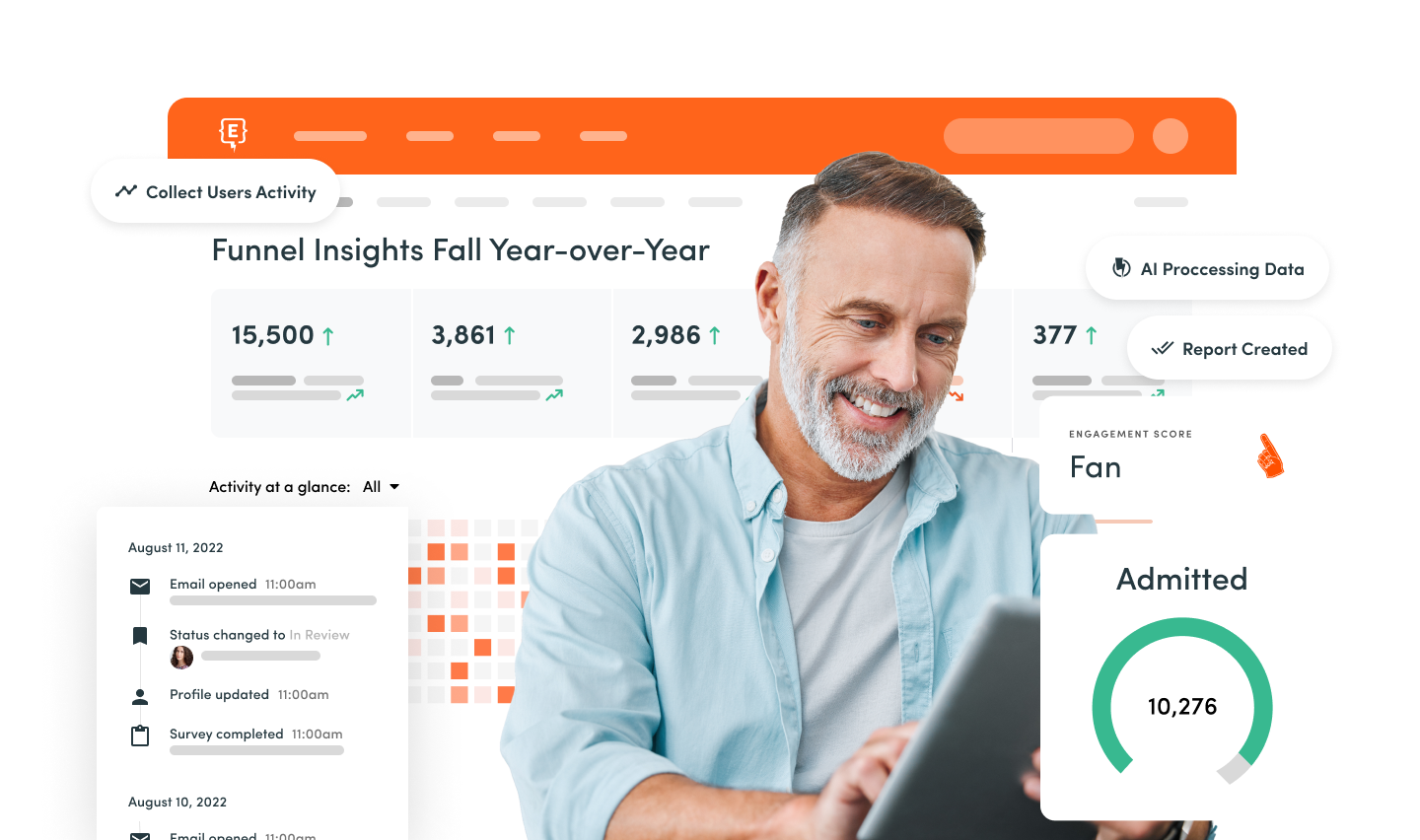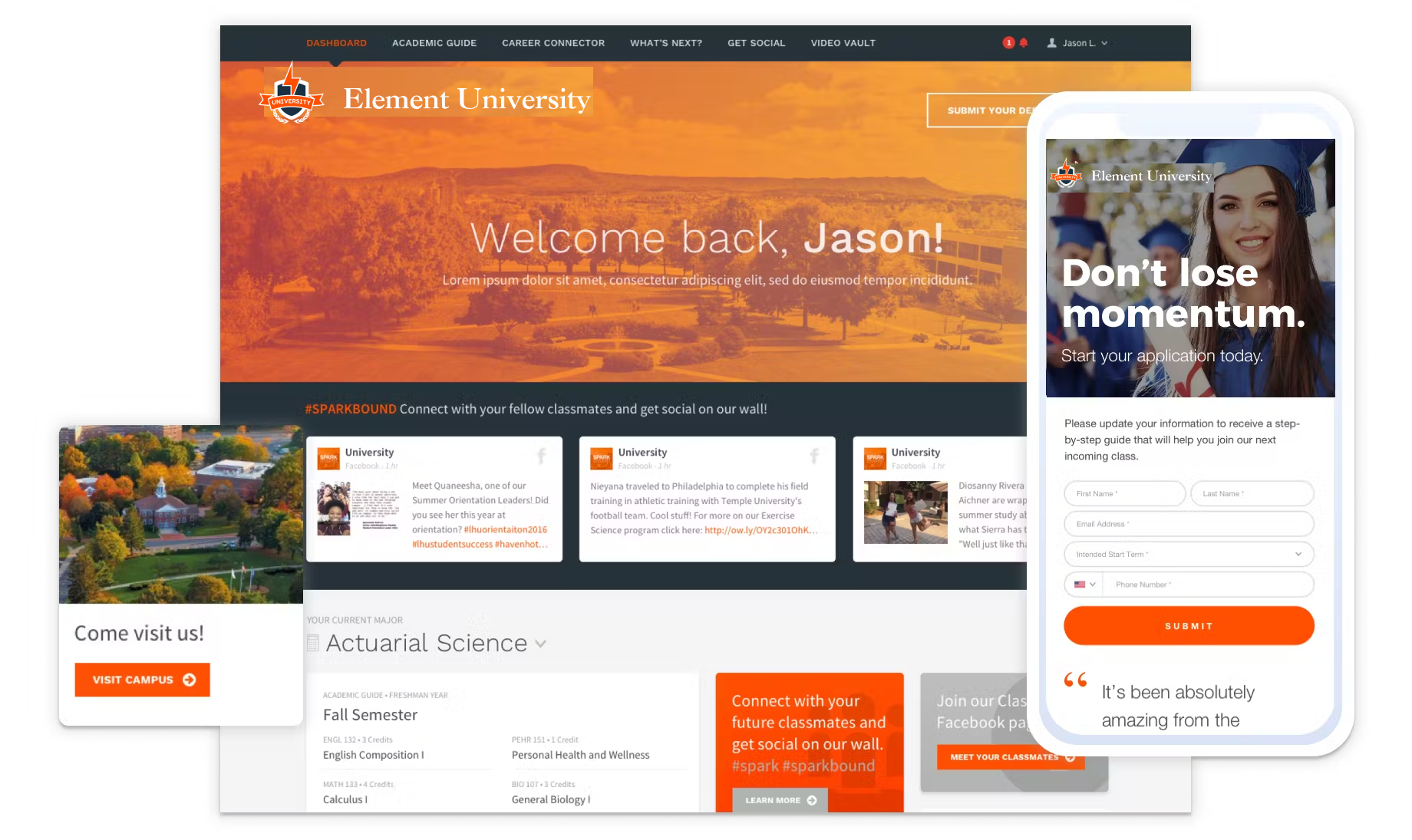How to Optimize the Web Experience for Modern Students
by Sirley Carballo · Updated Sep 13, 2024

The web has become the primary gateway to the world for students seeking higher education. As universities compete for the attention of prospective students, it is crucial to provide an optimal web experience that captivates and engages them from the first touchpoint to enrollment.
Leveraging the power of a customer relationship management (CRM) system and incorporating innovative web integration tools can significantly enhance the prospective student experience.
Let’s explore strategies to deliver a personalized, seamless, and dynamic web experience to attract and convert modern students effectively.
Understanding the Modern Student Journey
The first step in providing an optimal web experience is understanding the journey of today's modern students.
Each prospective student embarks on a unique path while exploring higher education options. By conducting comprehensive journey mapping, universities can gain valuable insights into the touchpoints and interactions that occur throughout the student's decision-making process.
Today's modern students also have specific expectations when it comes to their online interactions with universities. The higher education exploration process is full of friction, and students are seeking quick, personalized, and efficient communication. They want to access the information they need without hassle, and universities must be readily available to provide real and accurate answers to their questions.
The key to delivering an optimal web experience lies in understanding these expectations and addressing the needs of students effectively.

See Element451 In Action
With its powerful and customizable platform, Element451 can provide an unparalleled level of support to institutions seeking to engage with their students in a more effective and dynamic way.
See How it Works
Embrace Behavioral Marketing and Retargeting
Modern students are tech-savvy and accustomed to personalized experiences online. Integrating web and CRM systems enables universities to collect and leverage behavioral data to understand student preferences, interests, and online behaviors.
By utilizing this information, institutions can deploy retargeting campaigns to stay top-of-mind with prospective students who have shown interest in specific programs or the website.
Segmentation, customized content, timely delivery, and continuous optimization are essential aspects of a successful retargeting strategy.
Implement Dynamic Chatbots for Real-Time Assistance
With the rise of instant messaging and AI technology, chatbots have become a valuable asset in the web experience.
Dynamic chatbots, like Element451's BoltBot, offer real-time assistance and personalized interactions, enriching the user experience and simplifying the decision-making process.
BoltBot understands complex questions, provides relevant responses, and integrates with student profile information. BoltBot has the ability to remember chat history, support multiple languages and channels, and offers personalized assistance.
By integrating chatbots like Boltbot into university websites and CRM systems, prospective students can have their questions answered at any time, providing them with the support they need, ultimately leading to higher conversion rates.

BoltBot: Your New AI Assistant
Make your team of 3 feel like 10. Engage today’s students and free up overstretched staff with BoltBot, a 24/7 intelligent chatbot powered by Open AI.
See BoltBot In Action
Utilize Dynamic Microsites for Tailored Messaging
Dynamic microsites are an innovative tool that enables universities to create customized landing pages based on specific audience segments.
By connecting microsites with CRM systems, institutions can deliver tailored messages and capture valuable data to inform their enrollment strategies.
These personalized experiences make prospective students feel understood and appreciated, increasing their likelihood of choosing the university as their educational home.

Optimize for Mobile Responsiveness + Accessibility
Today's modern students are on the go and rely heavily on their mobile devices for browsing and communication.
To provide an exceptional web experience, universities must ensure their websites are mobile-responsive and optimized for a seamless mobile browsing experience.
Mobile-friendly websites not only improve user satisfaction but also positively impact search engine rankings, making it easier for students to find and engage with the institution.
Website accessibility is also crucial for creating an inclusive environment that caters to all students, regardless of their abilities. Universities should ensure that their websites comply with accessibility standards, allowing students with disabilities to navigate the site effortlessly and access critical information.
This approach reflects a commitment to diversity and inclusivity, appealing to a broader audience and reinforcing the institution's reputation as an open and welcoming place of learning.
Offer Virtual Tours and Interactive User Generated Content
Modern students crave immersive experiences, and virtual tours and interactive content provide just that.
By incorporating virtual campus tours, interactive maps, and multimedia elements, universities can showcase their campus, facilities, and academic programs in an engaging and captivating manner. This interactive approach offers a taste of the university experience from the comfort of the student's home, encouraging them to take the next steps in their educational journey.
Modern students value authenticity and peer perspectives when making decisions about their education. Incorporating user-generated content, such as student testimonials, reviews, and social media posts, can significantly impact the web experience.
Prospective students are more likely to trust the opinions of their peers, making them feel more confident in their decision to choose the university.
Continuous Data Analysis and Improvements
Providing an optimal web experience is an ongoing process that requires continuous data analysis and iterative improvements.
Universities should regularly analyze website performance, user behavior, and conversion rates to identify areas for enhancement.
This data-driven approach empowers institutions to refine their web strategy, deliver a more personalized experience, and stay ahead in the competitive higher education landscape.

Guide to Connecting with Gen Z
Gen Z expects brands to communicate with them like they know who they are. Learn how to create personalized campaigns at scale with this guide.
Get the Guide
The connection between a university's website and CRM system is the cornerstone of delivering an optimal web experience for today's modern students.
By understanding the student journey, embracing behavioral marketing, leveraging dynamic web integration tools, and focusing on accessibility and engagement, institutions can create a web experience that captures the attention and hearts of prospective students.
With an inclusive, interactive, and personalized approach, universities can stand out in a crowded digital space and successfully attract and convert the next generation of students.
To get an edge up on your website and CRM connection, connect with us for a personalized demo of Element451.

About Element451
Boost enrollment, improve engagement, and support students with an AI workforce built for higher ed. Element451 makes personalization scalable and success repeatable.
Categories
New Blog Posts

The Definitive Guide
AI in Higher Education
Bridge the gap between the latest tech advancements and your institution's success.
Useful Links

Talk With Us
Element451 is the only AI Workforce Platform for higher education. Our friendly experts are here to help you explore how Element451 can improve outcomes for your school.
Get a Demo








